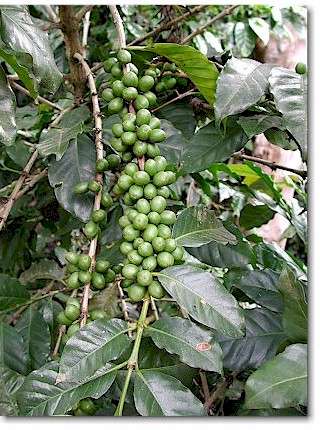Jamaican Blue Mountain Coffee is a globally protected certification mark, meaning only coffee certified by the Coffee Industry Board of Jamaica can be labeled as such. It comes from a recognised growing region in the Blue Mountain region of Jamaica, and its cultivation is monitored by the Coffee Industry Board of Jamaica.
The Blue Mountains are generally located between Kingston to the south and Port Antonio to the north. Rising to 2,300 metres (7,500 ft), they are some of the highest mountains in the Caribbean. The climate of the region is cool and misty with high rainfall. The soil is rich, with excellent drainage. This combination of climate and soil is considered ideal for coffee.
The Coffee Industry Regulation Act
The Coffee Industry Regulation Act specifies what coffee may use the Blue Mountain label. Additionally, it restricts the use of the Blue Mountain trademark to those authorized by the Coffee Industry Board. Broadly speaking, coffee harvested from the parishes of Saint Andrew, Saint Thomas, Portland and Saint Mary may be considered Blue Mountain coffee. The specific boundaries are defined as follows- Starting at Skibo and proceeding in an east-south-easterly direction to Swift River;
- thence east-south-easterly to Chelsea;
- thence east-south-easterly to Durham (Samba Hill);
- thence south-easterly to Belleview;
- thence south-easterly along the western slope of the John Crow Mountain to Cedar Grove;
- thence westerly to Font Hill;
- thence north-westerly to Ramble;
- thence westerly to Good Hope;
- thence north-westerly to Dallas;
- thence north-westerly to Industry Village;
- thence north-westerly to Maryland;
- thence north-westerly to Golden Spring;
- thence northerly to Brandon Hill;
- thence north-easterly to Tranquility;
- thence east-north-easterly to Skibo.
Classifications of Blue Mountain Coffee
- Blue Mountain No. 1 - 96% of beans must have a screen size of 17/20. No more than 2% of the beans may have significant defects.
- Blue Mountain No. 2 - 96% of beans must have a screen size of 16/17. No more than 2% of the beans may have significant defects.
- Blue Mountain No. 3 - 96% of beans must have a screen size of 15/16. No more than 2% of the beans may have significant defects.
- Blue Mountain Peaberry - 96% of beans must be peaberry. No more than 2% of the beans may have significant defects.

